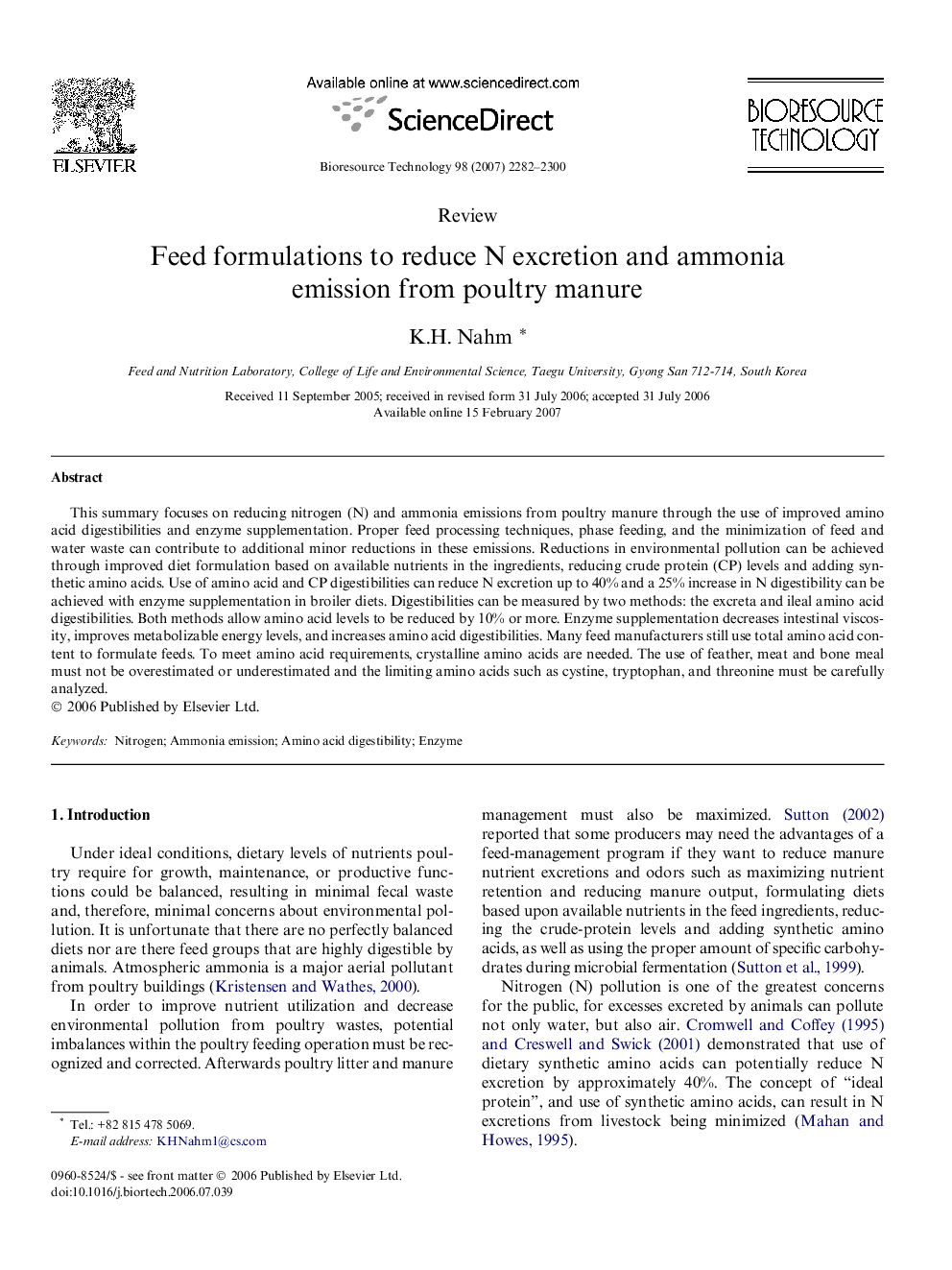| Article ID | Journal | Published Year | Pages | File Type |
|---|---|---|---|---|
| 684732 | Bioresource Technology | 2007 | 19 Pages |
Abstract
This summary focuses on reducing nitrogen (N) and ammonia emissions from poultry manure through the use of improved amino acid digestibilities and enzyme supplementation. Proper feed processing techniques, phase feeding, and the minimization of feed and water waste can contribute to additional minor reductions in these emissions. Reductions in environmental pollution can be achieved through improved diet formulation based on available nutrients in the ingredients, reducing crude protein (CP) levels and adding synthetic amino acids. Use of amino acid and CP digestibilities can reduce N excretion up to 40% and a 25% increase in N digestibility can be achieved with enzyme supplementation in broiler diets. Digestibilities can be measured by two methods: the excreta and ileal amino acid digestibilities. Both methods allow amino acid levels to be reduced by 10% or more. Enzyme supplementation decreases intestinal viscosity, improves metabolizable energy levels, and increases amino acid digestibilities. Many feed manufacturers still use total amino acid content to formulate feeds. To meet amino acid requirements, crystalline amino acids are needed. The use of feather, meat and bone meal must not be overestimated or underestimated and the limiting amino acids such as cystine, tryptophan, and threonine must be carefully analyzed.
Related Topics
Physical Sciences and Engineering
Chemical Engineering
Process Chemistry and Technology
Authors
K.H. Nahm,
